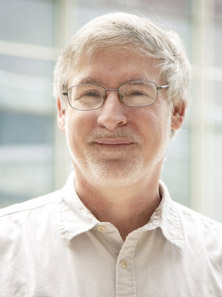Upstream energy companies could soon see a big upgrade in the technology used to identify oil and gas deposits thanks to University of Houston Professor Mark Meier.
The physics professor at the College of Natural Sciences and Mathematics recently won first place in UH Technology Bridge’s Innov8 Hub Pitch Day competition, a program that encourages students, faculty and staff to pursue early-stage ventures.

Meier’s winning pitch featured a technology being developed by his startup, Seismonics LLC. The innovation promises to greatly improve seismic exploration for upstream companies like ExxonMobil and ConocoPhillips.
“I’ve always felt there’s a lot of potential for seismic exploration, particularly when it comes to oil and gas exploration,” Meier said. “It’s always been an ambition in the industry to be able to include lower frequencies in seismic exploration.”
Meier compared seismic exploration to a sonogram, explaining the technology uses soundwaves to see underground. The problem, he said, is the technology upstream companies currently use can only see some features of the earth.
Meier’s innovation aims to increase the opportunities these companies can search within the earth.
“My technology can go at least two octaves lower in frequency and that buys you a lot of technical advantage,” he said. “Low frequencies dissipate much slower and they can go much further into the ground.”
The way the technology currently works is a piston repeatedly pushes on the ground using hydraulics to create the soundwaves. It’s sufficient and mobile, but Meier noted its limited range could mean wasting money on empty wells.
“This technology can lower costs and risks for oil and gas companies.”
— Mark Meier, physics professor at College of Natural Sciences and Mathematics, University of Houston
Meier’s technology is large, requiring a truck to transport it. The professor explained it instead uses a rotating set of weights to push on the ground, generating a lower frequency that vibrates deeper into the ground.
“This technology can lower costs and risks for oil and gas companies,” he said. “If you know more about the subsurface, you drill fewer dry wells.”
Meier first became interested developing a more powerful seismic exploration tool when he worked as a research specialist at ExxonMobil, where he was employed for 18 years prior to joining UH in 2016.
There, he and his team developed a small-scale experiment that suggested his idea could work, but the project was paused to consider the expenses of a full-scale experiment and commercialization effort.
“That’s the point where we decided we really wanted broader industry participation in order to make this work,” he said.
In the time since, Meier has perfected his technology and is ready to build a full-scale concept — but the biggest hiccup is funding. Meier said he is in the middle of pursuing research and business grants to help fund the project, which he estimates will cost $2 million.
Once he has the funding, Meier said it will take approximately two years to build and complete field tests of the technology.
“We need to get that funding; that’s critical,” he said. “Once we have that, we’ll be able to work with the University of Houston and get this commercialized.”
